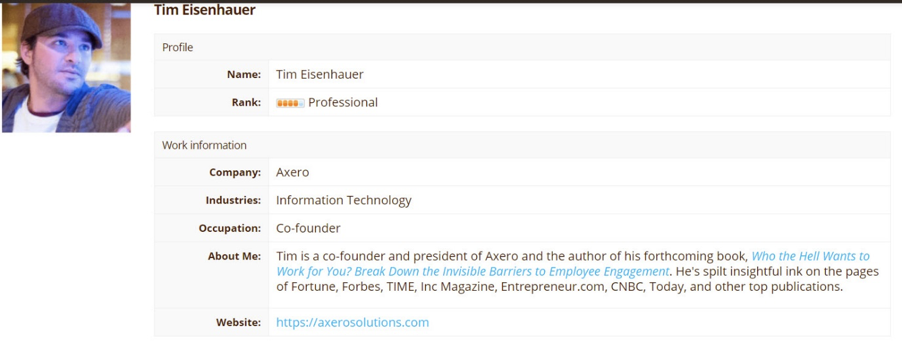
Doctors, teachers, religious leaders, firefighters, police, and military officers—what do these people have in common? They’re in positions of authority and are people that others tend to respect because human nature tends to automatically respect and obey authority. We trust what the doctor tells us. When a cop tells us to do something, we do it. We believe what our teachers teach us. We rely on people with superior knowledge or training in a specific area.
I’m not saying we’re unquestioning drones, but our own psychology does come heavily into play when it comes to authority. We are easily swayed by those in positions of authority. In fact, authority is one of the six key principles of persuasion in Robert Cialdini’s books, “Influence” and “Persuasion.” I went over this at a high level in my post Persuasion at Work, and this post is going to dive even deeper.
Authority Principle Recap & Definition
Obeying authority is such an ingrained principle for us as human beings that you might not even realize your own psyche is at work. What makes a person an authority? Believe it or not, a uniform or title is often all it takes. When someone says they are an authority or shows outward symbols of authority, we don’t tend to question whether they are an authority or not. That carries heavy implications because we follow the suggestions of authorities; we believe what they say.
What if that authority is doing something illegal or immoral, though? Science tells us that we will still obey the person of authority. This principle of authority is what a con artist operates off of and why they can become so successful. In addition to being a crook, a con artist is also a talented actor! By pretending to be an authority on a subject; and because of this psychological principle, the mark (victim) doesn’t question the con artist.
Authority in the workplace is also why we trust the waiter’s suggestions about the food at a restaurant. We trust he knows what he’s talking about because he’s an authority on the food he serves. In the workplace, you can use the principle of authority to boost employee morale and, more importantly, build trust through seven authority activators.
Benefits and Differences of Using the Authority Principle
Understanding and applying the authority principle can benefit your workplace drastically. It helps in building trust, enhancing credibility, and creating a more structured and productive work environment. The key difference between an effective use of authority and its misuse lies in ethical application and consistency. When used wisely, authority can motivate employees, streamline decision-making, and significantly increase overall efficiency. On the other hand, misuse can lead to mistrust, low morale, and a toxic work environment. Recognizing these differences and focusing on ethical leadership practices will ensure that the authority principle benefits both leaders and their teams.
Authority Persuasion Examples in the Workplace
As a manager or leader within your organization, you’re in a position of authority. Overall, U.S. workers’ trust and confidence in their leaders has been slowly, yet steadily, increasing with more than half of all U.S. employees saying they have faith in their senior leaders. I believe that authority is the most important principle for managers to understand because it’s a powerful tool of influence.
I’m using “weapon” purposefully here. Authority is easy to use and even easier to abuse. Once you’ve broken the trust of your employees, rebuilding it is all but impossible. Triggering authority can make it easier to trigger all the other principles of persuasion. While I’m going to give you some critical tools in this article for using the authority principle to create a happier and more productive workplace, I want you to read this article with a sense of caution. Authority is not to be used for personal gain, eventually, that will come back to bite you. Rather, use this principle wisely, and it will result in happier, more engaged employees who genuinely trust your leadership.
The 7 Authority Activators
1. Aesthetics
The first activator is aesthetics: how you outwardly present yourself to others. Aesthetics has a direct impact on how others perceive you. To be perceived as an authority, start by looking like one.
- Dress for Success: Fancy clothes and a neat appearance signal high status.
- Personal Hygiene: Keep your hair neat and pay attention to grooming.
2. Early Engagement
Engage new hires from day one if you hope to hold onto them. A formal new-hire orientation practice is great, but as a leader, you need to go one step beyond! To boost your new hire’s onboarding process, make sure they are set up with Axero’s intranet software.
- Onboarding: Help new hires get set up on the company intranet.
- Company Culture: Clearly communicate your company’s mission, vision, and values. Build your company culture into something you and your employees are proud of.
3. Top-Down Mentality
Trust starts from the top and works its way down. Employees need to trust that you’ve got their backs.
- Trust Building: Ensure your employees feel secure and confident in your leadership.
- Goal Setting: Help employees set and achieve their goals by building trust.
4. Walk Your Talk
Lead by example. If you don’t want employees showing up to the office in shorts, don’t wear shorts yourself.
- Practice What You Preach: Align your actions with your words.
- Social Proof: Use the intranet yourself if you want your employees to use it.
5. Make Employees Visible
Recognize and celebrate your employees’ achievements. This not only boosts their confidence but also enhances your credibility as a leader. Making your employees more visible will only help you as a leader and collectively as a team!
- Recognition: Highlight employee accomplishments in team meetings and reports.
- Visibility: Make sure employee successes are known far and wide.
6. Support Career Development
Invest in your employees’ growth by providing opportunities for training and education, and supporting their career development. For education organizations, intranet software can be a powerful tool to centralize resources, track progress, and foster a culture of continuous learning.
- Training Opportunities: Offer access to the education and training they need.
- Career Growth: Encourage and support their career development plans.
7. Model Positive Traits
Demonstrate traits such as integrity, humility, and empathy. These positive traits build trust and respect among your team.
- Integrity: Be honest and ethical in all your dealings.
- Empathy: Show genuine care for your employees’ well-being.
The 4 Authority Amplifiers
We believe [ideas] because we trust authorities.
— Chip and Dan Heath, Made to Stick
1. Credibility
Establish your credibility by displaying your expertise and achievements. Admitting weaknesses and then highlighting your strengths can enhance your credibility.
- Showcase Expertise: Display degrees, awards, and other credentials.
- Transparent Communication: Admit mistakes but pivot to strengths.
2. Expertise
Share your specialized knowledge and skills. This not only positions you as an expert but also helps your team learn and grow.
- Share Knowledge: Provide detailed stories and statistics.
- Expert Introductions: Have others introduce your expertise.
3. Trustworthiness
Build and maintain trust through ethical behavior, transparency, and consistency. Trust is the foundation of effective leadership.
- Ethical Behavior: Always prioritize ethics and integrity.
- Transparency: Be open about company changes and directions.
4. Intellectual Humility
Stay open to new information and different perspectives. Acknowledge when you’re wrong and be willing to learn from others.
- Seek Feedback: Encourage input from your team.
- Admit Mistakes: Be open about errors and learn from them.
Social Proof and Influence Attempts
Social proof is a powerful tool in persuasion. People tend to follow the actions of others, especially when they see knowledgeable experts endorsing a particular course of action. Use social proof to your advantage by highlighting successful examples within your team or organization.
It’s also important to show your credentials off, this includes internally. More than likely, you’re not a celebrity, but you will have expert credentials, so why not display them? Put your master’s degree in a nice frame, hang it on your office wall, and list your awards on your intranet profile.
The next technique comes from Cialdini’s book Influence. Bring attention to your strengths by admitting weakness and then pivoting to your strength on a transitional word such as however, but, or yet. Here’s an example:
“I lost that deal last month, however, we learned tons of valuable information about the sales process with that company. Here’s what we are going to do differently now…”
Here’s another example:
“I don’t have experience in that area, but I’m a fast learner.”
You might think that admitting a weakness is a bad thing. More than likely, though, the person you’re speaking to already knows you have that weakness. It’s not news to them. Using a transitional word between the weakness clause and the strength clause channels your listener’s attention to the strength. This practice boosts your credibility because you’re being transparent. You’re not hiding your weakness, but instead, you’re bringing your strength as a leader to the forefront.
3 Questions to Help You Reach the Authority Master Level
- What information can help your employees make better decisions?: Share relevant knowledge and insights that can guide your team.
- How can you highlight your expertise and honesty?: Demonstrate your strengths and be transparent about your weaknesses.
- Are you mentioning your weaknesses before your strengths?: Use transitional phrases to shift focus from weaknesses to strengths, enhancing your credibility.
Authority Persuasion Examples in Action
Using authority persuasion examples effectively can transform your workplace. One example is the use of uniforms or titles to establish credibility. For instance, a team leader who dresses professionally and uses their title confidently can significantly increase their influence over the team. Another example is telling potential customers about your certifications or awards to build trust and respect.
Understanding the Authority Principle
The authority principle is a core concept in Cialdini’s principles of persuasion. It explains why people tend to follow the lead of someone they perceive as an authority. This principle is grounded in human behavior and psychology. By establishing yourself as a knowledgeable authority, you can persuade people more effectively and create a more productive workplace.
How to Model Positive Traits
To model positive traits is to lead by example. This means demonstrating positive traits such as intellectual humility, empathy, and integrity. When team leaders show these traits, it encourages employees to do the same, transforming employees to have a positive way of working and building trust. Genuine compliments and recognition can also significantly increase morale and engagement within your teams.
Utilizing Social Proof in the Workplace
Social proof is a powerful influence attempt that leverages the behavior of others to guide individual actions. In the workplace, showcasing successful projects or employees visible receiving awards can create a ripple effect, encouraging others to follow suit. Highlighting knowledgeable experts within your team can also establish a sense of credibility and trustworthiness.
I touched on this with one of my articles on social proof, you can read more here for a deeper dive specifically into social proof in the workplace.
Effective Influence Attempt Strategies
An influence attempt can be made more effective by understanding and applying Cialdini’s principles of persuasion. Start by building your credibility through expertise and consistent behavior. Use social obligation to encourage reciprocal actions from your team, and always aim to persuade people in a manner that respects their autonomy and promotes a positive way of working.
Harnessing the Power of Authority for Workplace Success
Authority is a powerful force in the workplace. By understanding and applying the principle of authority, you can create a more positive and productive environment. Use these strategies to build trust, improve team dynamics, and achieve your business goals. Remember, with great power comes great responsibility. Use your authority wisely and ethically to build a respectful and engaged workplace, where your employees are happy and motivated to work in.
The authority practice will also turn your intranet into a source of truth for your business. It will allow your employees to have an online space they can go to, getting any information they need, when they need it. Also, your employee intranet is a platform for employees to hear change is coming down the pipe. It’s an opportunity to proactively address change before employee morale takes a hit.
In our next installment in the Persuasion Master series, you’ll learn how to use the scarcity principle to gently funnel your employees’ attention to the most important tasks and activities.














 info@axerosolutions.com
info@axerosolutions.com 1-855-AXERO-55
1-855-AXERO-55


